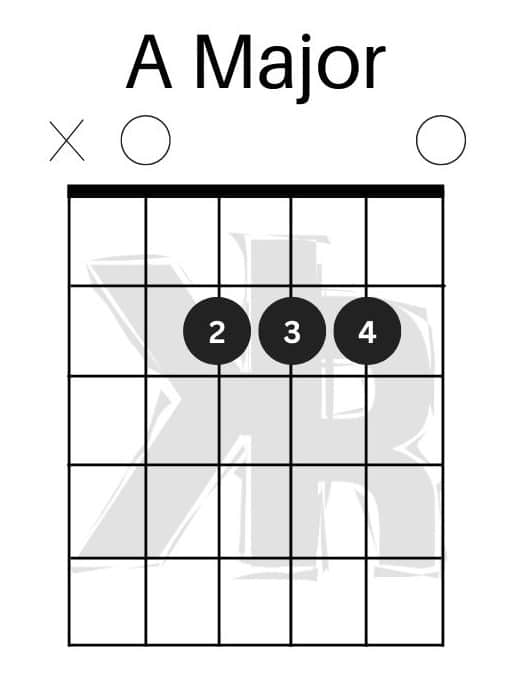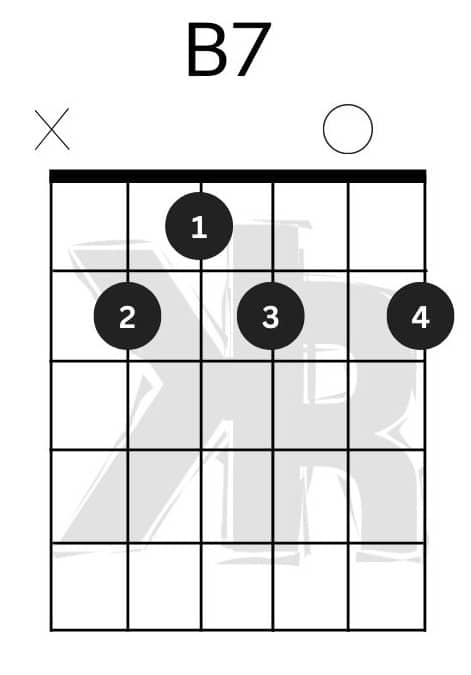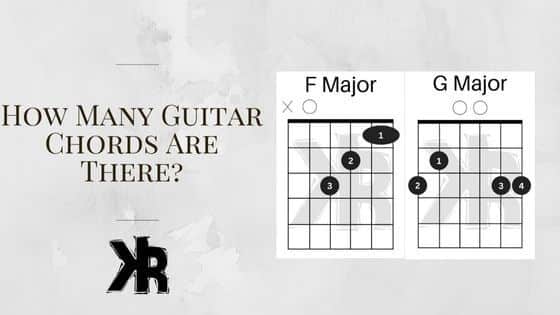Table of Contents
Chords are the foundation of playing music on the guitar. Understanding the various types of chords and how they are constructed is paramount!
Also, knowing how they fit together is crucial for any aspiring guitar player. But have you ever wondered, how many guitar chords are there?
In total, there are 4017 possible chord combinations on the guitar. But only, 2341 of them are actually considered playable chords. The rest are a collection of possible notes that couldn’t be played with your fretting hand alone.
We have come to this number by way of the many different note combinations. These are either one or even up to ten notes. Some of which are hard to play, but are still possible chords!
In this Killer Rig article, we will explore the basics of guitar chords. We will look with more detail into the question of how many chords exist.
The Number of Guitar Chords
Guitar chords are one of the most essential elements of playing the instrument. Whether you’re a beginner or a very advanced player! Understanding the various chords is crucial to expanding your musical repertoire. But just how many chords are there on the guitar?
One way to approach this question is to look at the number of different combinations. The first is based on the 12-note chromatic scale. By counting the number of possible combinations of notes, we can determine the chords.
For example, when we have 3 note combinations, there are 220 possible chords. This number increases as we add more notes. Ultimately reaching a peak of 924 possible chord combinations with 6 notes. But it doesn’t end there!
You can continue to add notes together until you reach the over 4000 chord possibilities on the guitar. But remember, not all of them are playable with one hand and makes some of them useless.
How Many Guitar Chords Should You Learn?
As a beginner guitarist, it can be overwhelming to know where to start. As you have seen, there are thousands of chords to choose from! It’s important to set realistic goals and determine how many you should learn.
To begin with, it’s a good idea to start with the most commonly used chords. They will give you the versatility to play a wide range of songs and styles. Anything from folk and pop to rock and blues. The most common chords include:
- A Major
- B Major
- C Major.
- D Major.
- E Major.
- G Major.
As you progress and gain confidence in the basics, you can start expanding. Learning more advanced arrangements, such as seventh or altered chords. However, it’s important to keep in mind that the number of chords you should learn is not set in stone. This will vary depending on your individual musical interests.
Some guitar players may only focus on learning a few. And instead, put more effort into perfecting their technique and phrasing.
Further reading: How to change guitar chords faster.
Major Chords
Major scale chords are some of the most commonly used types in guitar playing. They are characterized by their bright and happy sound. They are used in a variety of music genres including pop, rock, and classical.
A major chord is formed by playing the root note. Then followed by a major third interval. And finally a perfect fifth interval.
This creates a harmonious blend of notes that evoke a positive and joyful mood. An example of a popular song that uses major chords is Happy Birthday.

Minor Chords
Minor chords, in contrast, have a sad or contemplative feel. They are formed by playing the root note, followed by a minor third interval. And then a perfect fifth interval. The minor third interval gives the chord its sound.
This makes it a staple in genres such as blues, jazz, and classical. A popular song that features minor chords includes Yesterday by The Beatles.
Minor chords have the ability to arouse a variety of emotions when used in various progressions and arrangements. They become a diverse and significant part of playing the guitar because of this.
Augmented Chords
Augmented chords are characterized by their sharp and tension-filled sound. They are created by playing the root note, followed by an augmented third interval.
Then the perfect fifth interval. This unique combination of notes creates a sense of tension and instability.
It makes augmented chords well-suited for use in genres such as rock, jazz, and fusion.
They are less commonly used compared to major and minor chords. But they add a new dimension to your musical landscape when used effectively. A great song example that uses augmented chords is Purple Haze by Jimi Hendrix.
Seventh Chords
Seventh chords add an extra layer of complexity to guitar playing! They have a specific sound.
They are created by playing the root note, followed by a third, a fifth, and finally a seventh interval. Seventh chords are commonly used in genres such as blues, jazz, and R&B.
They can evoke a range of emotions depending on their progression and arrangement. A great song that takes advantage of this arrangement is All of Me by Louis Armstrong.
Whether played as dominant or diminished seventh chords. They are a fundamental part of guitar playing that offer endless creative possibilities.

Conclusion
We only touched on a few of the 2341 playable chords. As you can see, there are a lot of variations and combinations.
Chords can be played in many ways and are very powerful. It’s not necessary to learn them all, but find the ones that work for your style.
Then, write the best music you can, as there are more than enough chords to work with! If you’re just getting started, check out these 11 easy guitar chords for beginners. They are an excellent place to start when working on music theory!

